Samsung Gear VR with Controller powered by Oculus review
The Galaxy S8 and a pack-in remote give this headset fresh life
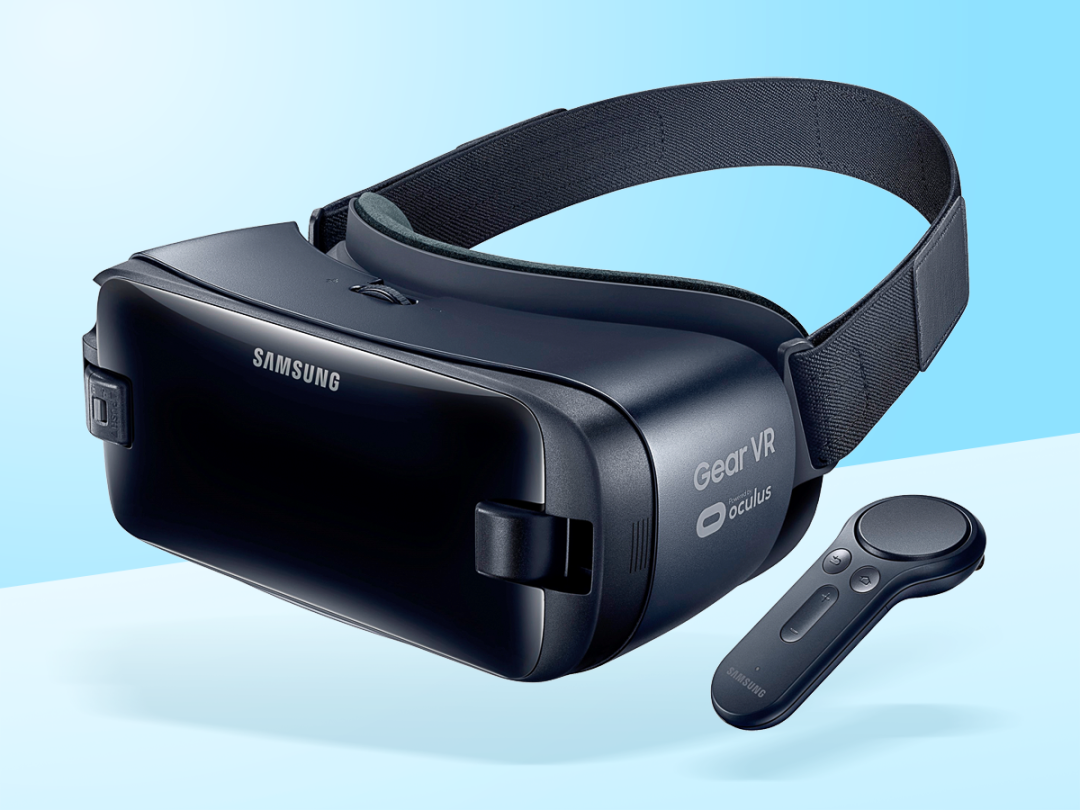
Samsung’s mobile VR ambitions haven’t been a short-lived fling: we’ve seen the Gear VR platform enhanced and expanded across the board, over five hardware generations.
The latest, paired with the new Samsung Galaxy S8 or S8 Plus inside, is the best experience to date. Truth be told, there aren’t any major headset differences compared to the last version, designed for the quickly recalled Galaxy Note 7, and that wasn’t hugely different from the previous consumer edition.
What’s different here is the wireless motion controller. Previously, your only physical input options were to fumble for the touchpad on the side of the headset itself, or buy a separate gamepad that few developers made great use of.
But now, this pack-in is a critical part of the setup, and it opens the doors to more comfortable and more advanced play experiences. And you don’t need a high-end PC to bring it to life.
Built for the S8
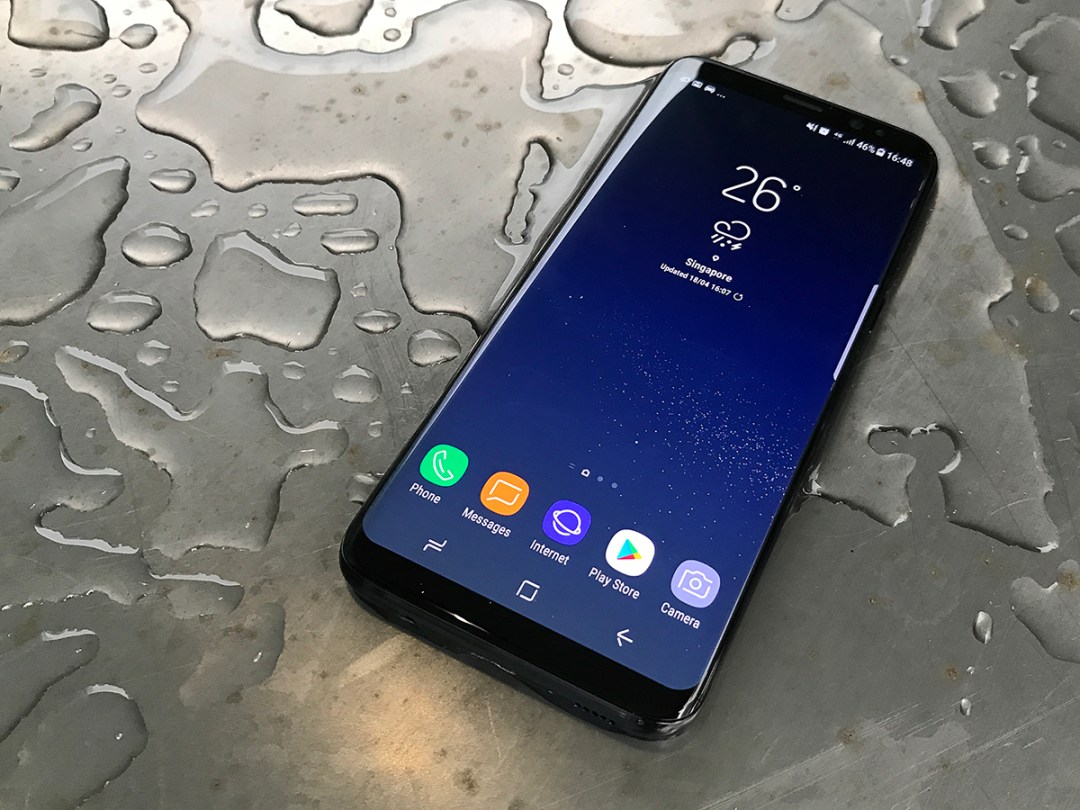
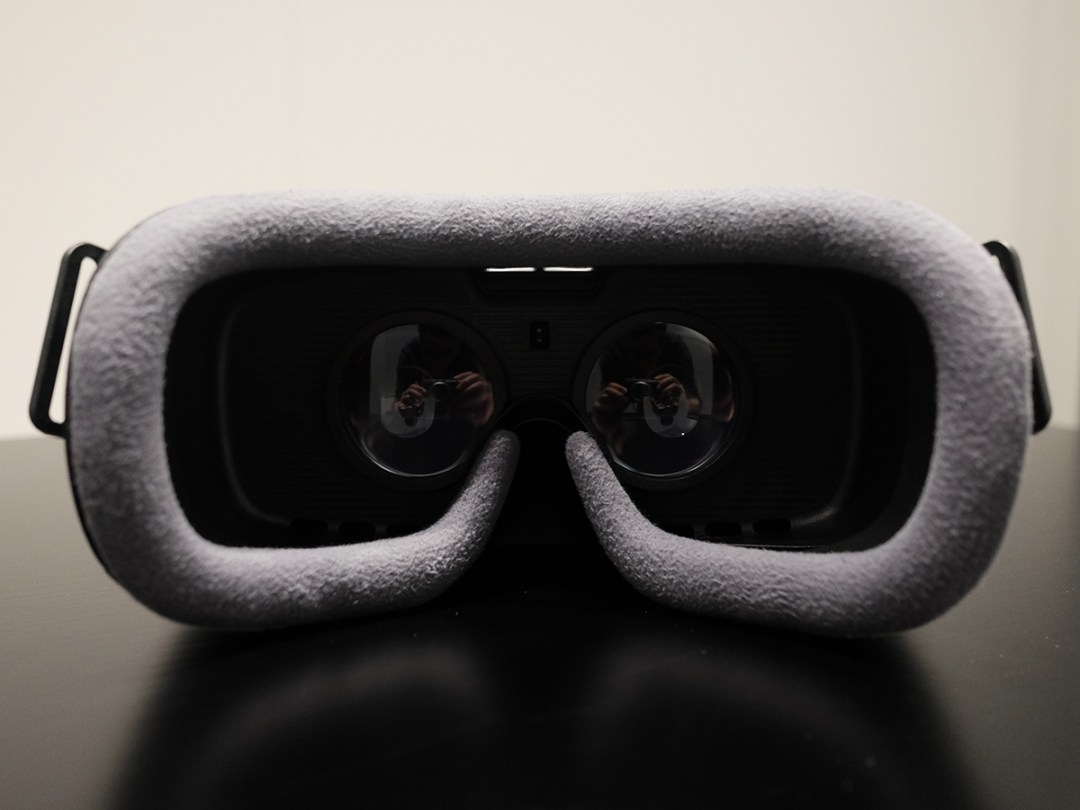
Really, not much has changed with the actual headset itself since last year’s revision. The Gear VR is still just a shell that needs a brain, and that brain is your semi-recent flagship Samsung phone.
It’s obviously best with either the Galaxy S8 or Galaxy S8 Plus, which both have large, extra-wide Quad HD AMOLED displays – the best found on a smartphone today – and the fastest chips on the market, whether they’re the UK-spec Exynos 8895 or more global Snapdragon 835.
I used the standard Galaxy S8 in my own testing, and the experience was largely smooth. Games didn’t necessarily perform better than when I was using a Galaxy S6 Edge+ with the original consumer Gear VR headset, but there was one crucial difference: I never once encountered overheating, whether it was a pop-up warning or fogging inside the lenses. That’s a big advantage.
However, you don’t need the top-of-the-line handset to use this Gear VR: you can swap the USB-C connector for a micro-USB nub and use any Galaxy S6 or S7 model, as well as the Note 5. And all have brilliant Quad HD screens, so the only real difference comes down to processing power and whether you’ll encounter overheating or not.
Fit and form
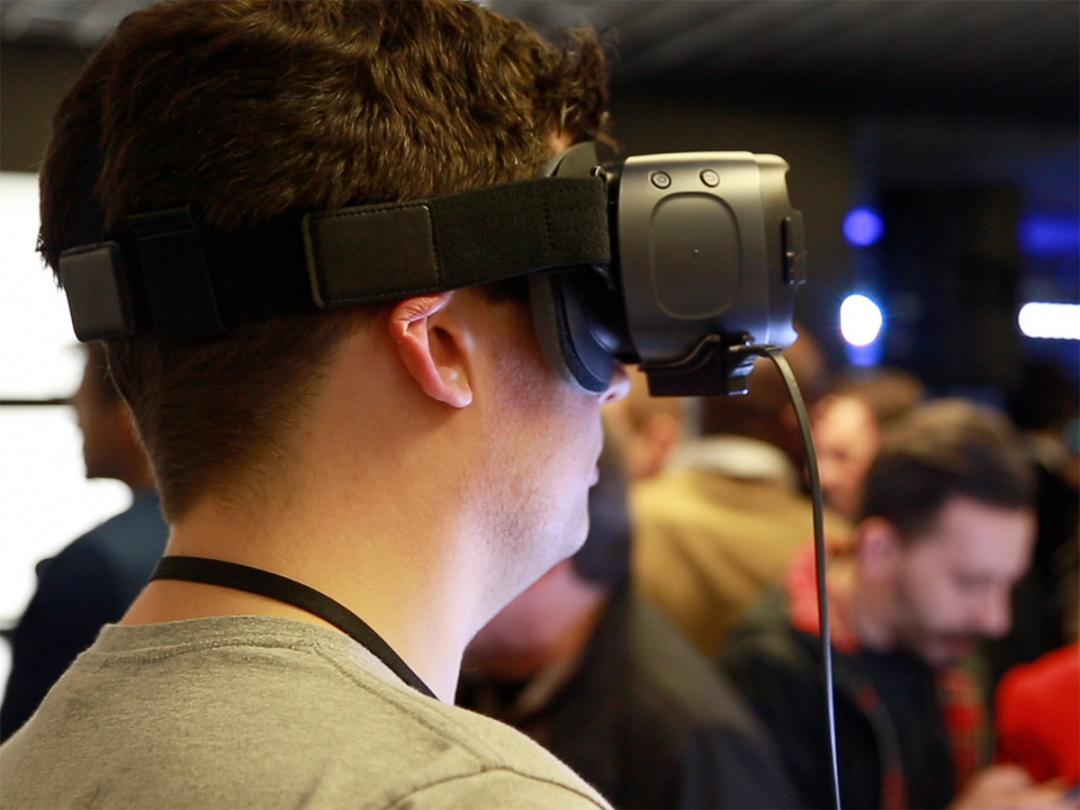
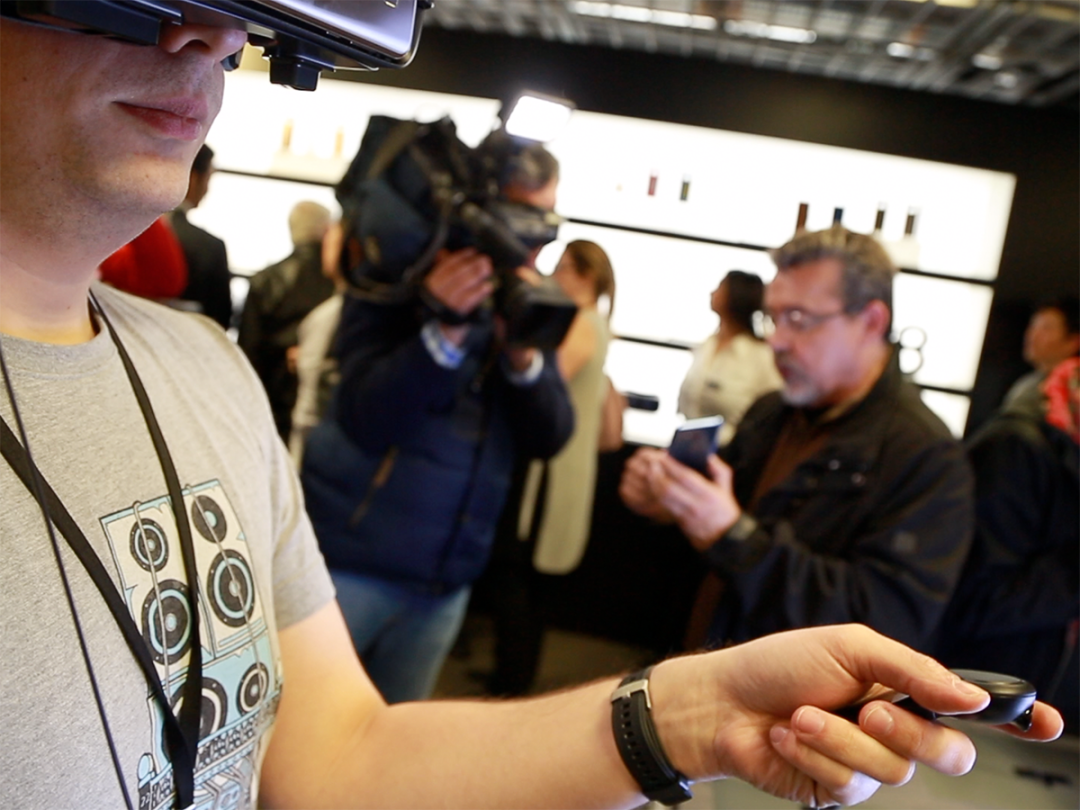
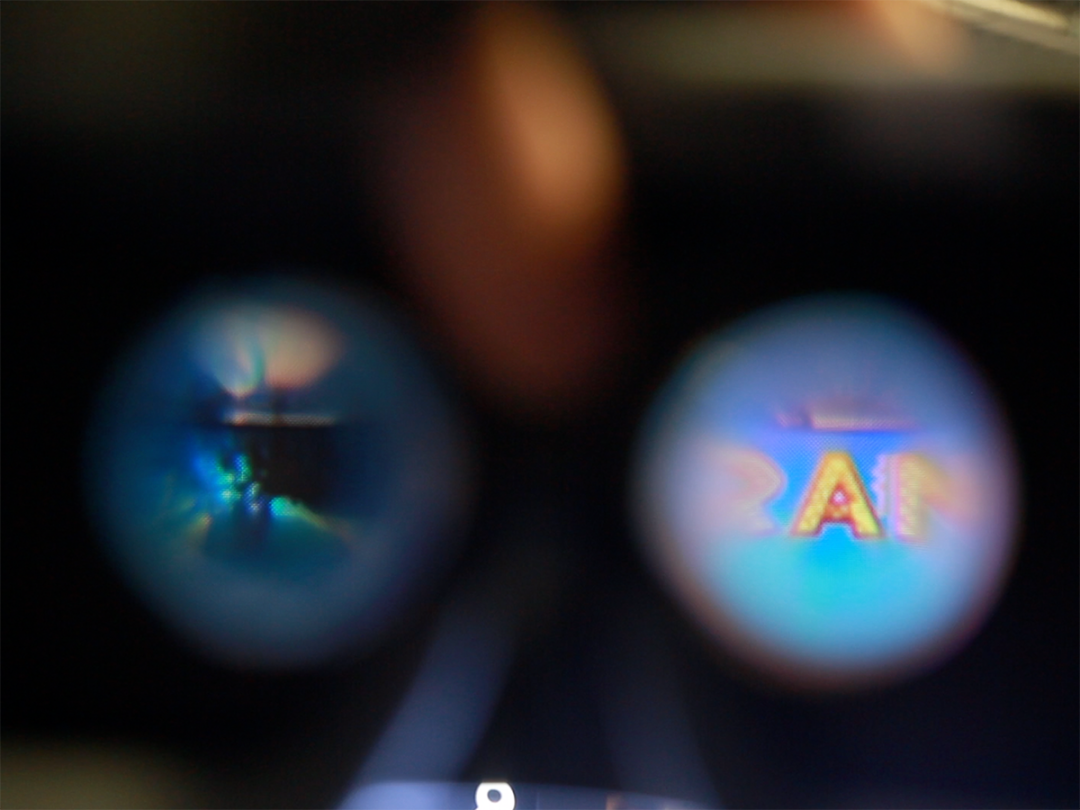
Otherwise, the headset itself fits and feels a lot like it did before: it’s solidly comfortable and doesn’t feel too heavy on your face, although it still pinches my nose a little bit. a small price to pay for a half-hour spent staring at Smash Hit, I suppose.
Adjustable Velcro straps from the sides and top help you find a snug fit on your dome, and actually, there’s one size enhancement over the original consumer version: more space for glasses. While they still felt pressed up against your eyes in that model, there’s just enough breathing room here to make them reasonably comfortable inside.
That said, I did notice additional light bleed coming from around the nose. It’s slight, and it’s only noticeable when nothing is on your screen, but I did make an extra effort to minimize nearby lighting as a result.
As before, there’s a physical dial up top to adjust the lenses to get your view as clear as can be. Still, overall, the entire process of snapping your phone into the headset, putting it on your head, and navigating the interface takes a matter of seconds. And now you have something to hold onto.
Power in your palm
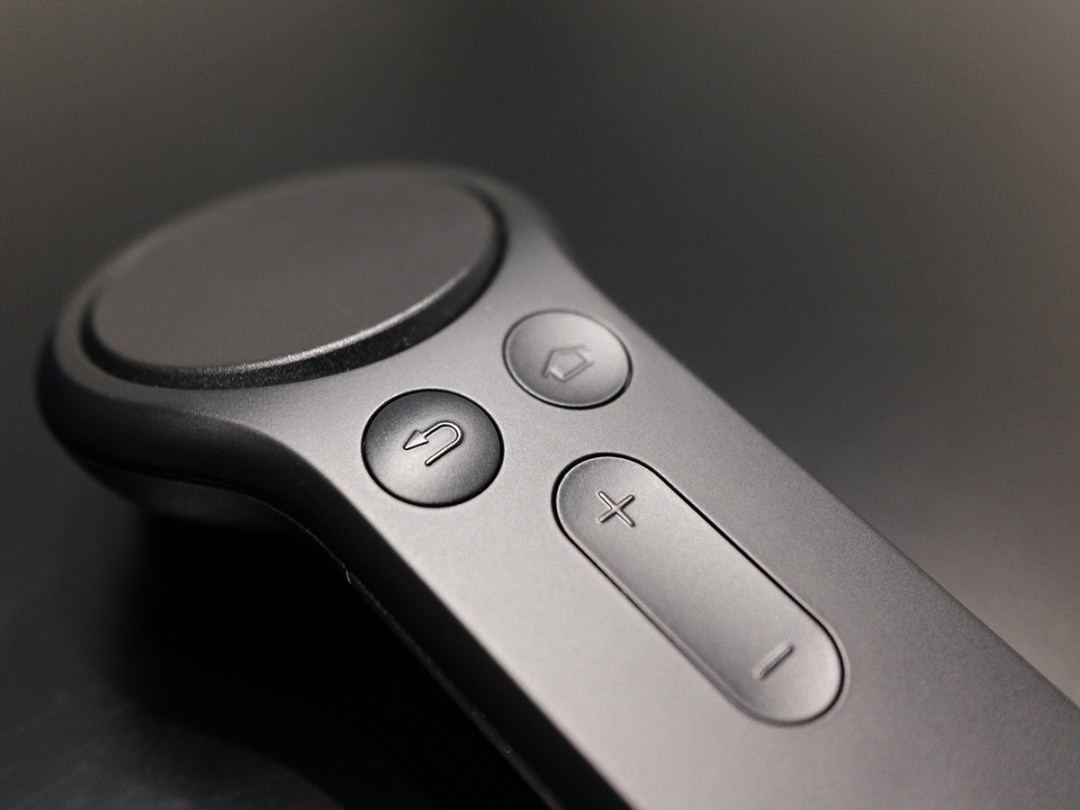
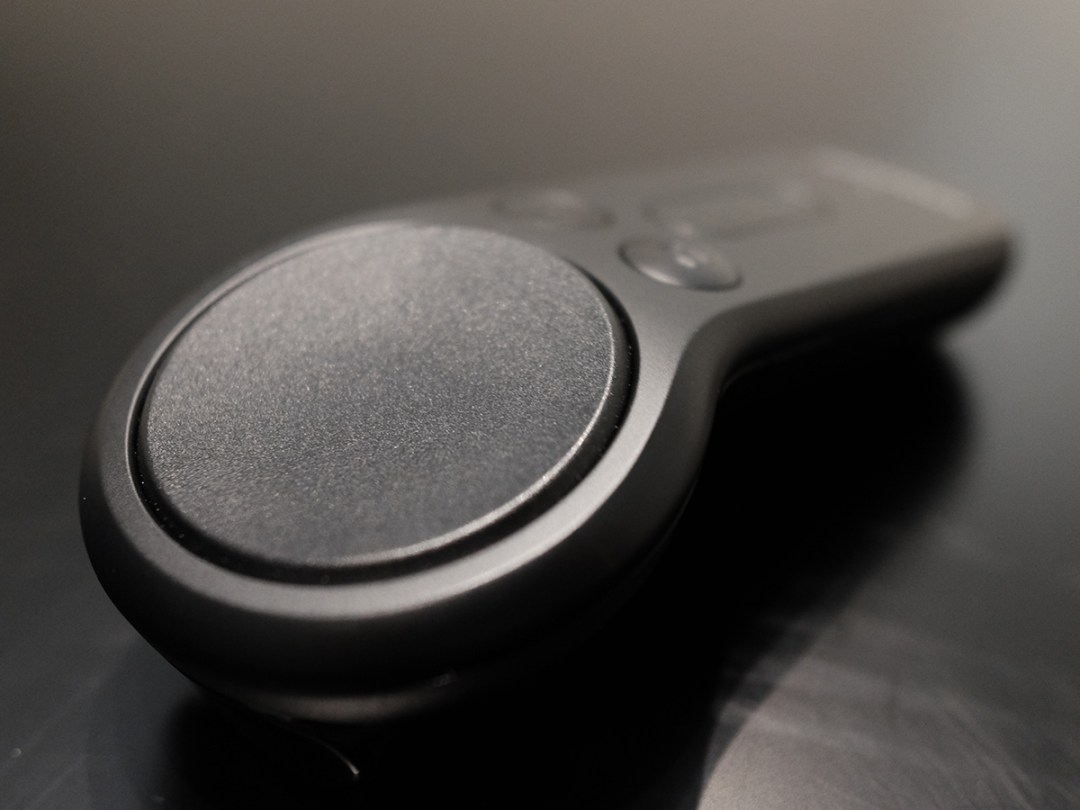
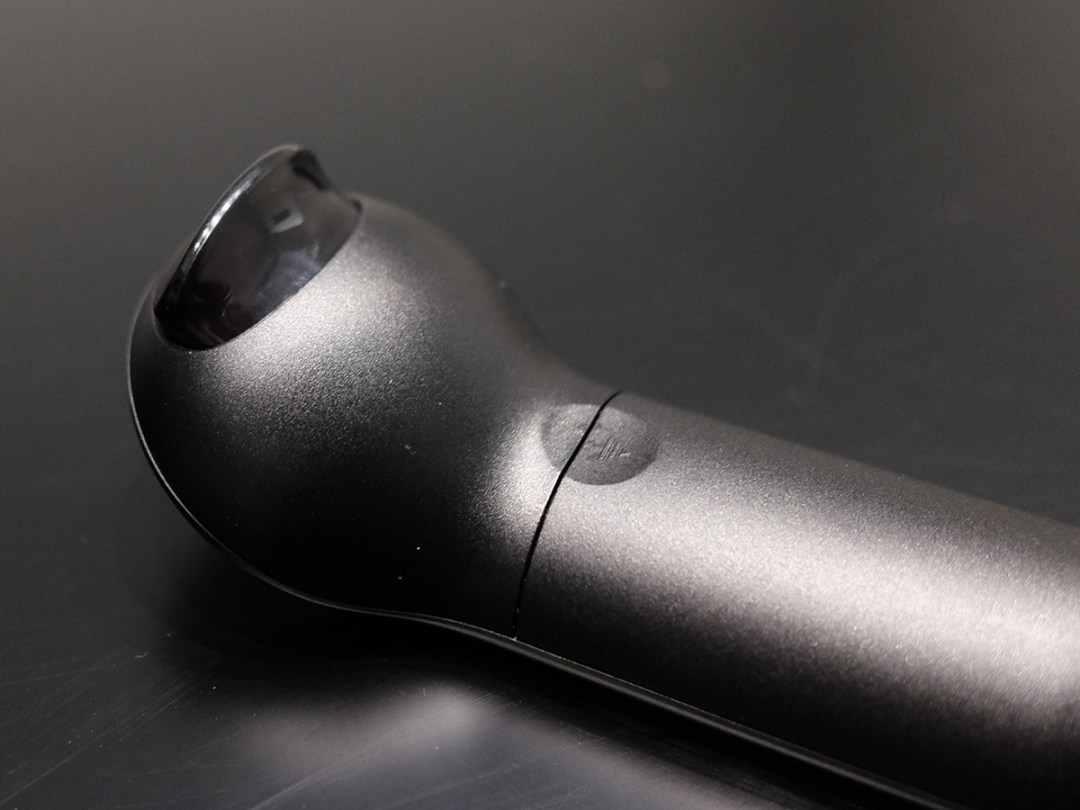
While the headset-bound touchpad is still there, it’s never been a particularly great way to interact with games. Having to maneuver your fingers to it while wearing the thing always leads to unintentional inputs, and if you’re playing for a long time and keeping your hand up, then your arm is sure to get tired.
Luckily, the Gear VR controller soothes all woes. It seems inspired by Google’s Daydream View remote and looks a lot like a scaled-down HTC Vive controller. The clickable touchpad is the biggest draw, and it can be clicked in various directions for different kinds of inputs depending on the game.
Meanwhile, there’s a nice big trigger on the bottom – ideal for shooters – and a few menu-centric buttons along the grip. The controller is powered by a pair of AAA batteries and is kept incredibly compact; you can even slide it into the headset’s strap for storage. No, I didn’t manage to wear them down in my week of testing, but it’s still annoying to have to buy replacements – Google’s Daydream View has a rechargeable controller that’s just a little bit more refined.
It’s nice. It’s really nice, actually. Without external sensors reading your movements, the Gear VR controller can’t offer the kind of incredible accuracy or complexity of interactions that we’ve seen with the Vive or the Oculus Touch controllers, but it does an admirable job thanks to a built-in accelerometer and gyroscope.
You’ll see it come to life in games as a magic wand or a gun, and the ability to have a motion controller react in the game as does in your hand really amps up the immersion. It’s solidly responsive, is precise for aiming weapons and nailing headshots, and feels nicely built all the while.
There is one downside, however: you will frequently need to recenter the controller during play. The Gear VR will gradually lose its positioning as you move and jostle the remote, but point forward and hold down the little Home button and you’ll be back at center.
That’s an awkward little niggle, but again, we’re talking about affordable mobile VR – there are tradeoffs. This isn’t a particularly painful one.
What to play
Just one week after launch, the number of controller-enhanced games and apps has quickly doubled – it’s up to 35 as of this writing, whereas there were maybe 15 to 20 listed on the Oculus storefront upon release. In many cases, these are just existing Gear VR games updated to be more comfortable with the controller.
Drop Dead is a fun, albeit simplistic option, in which you’ll blast off zombie heads with ease using the controller, while Rangi is a cool environmental puzzler that’s not quite as complex or maddening as The Witness, but is solidly compelling all the same. Dragon Front, a collectible card game battler, lets you move spawned fantasy units to the board with ease, and that’s just a taste of what you’ll find right now.
Paint VR, meanwhile, is like a scaled-down version of Google’s brilliant Tilt Brush for Vive and Oculus Rift, and it’s fun to doodle in 3D space all around you. And apps like AltspaceVR, Star Chart, and Facebook 360 have been updated for controller compatibility.
Even existing games and apps that don’t have the little “Controller Supported” banner are better with the remote. Smash Hit and EVE: Gunjack are significantly more comfortable without having to reach up for the headset touchpad, and there’s no learning curve or complexity in learning how to use them.
If you did already buy a full-fledged gamepad for your Gear VR, you can still use that with a lot of games, although you won’t have the motion or touch controls needed for most of the controller-compatible games. On the other hand, it’s the only way you’ll be able to play Minecraft on Gear VR, since the motion controller won’t do the trick.
Even though the Gear VR has some really sharp experiences, as we have extensively detailed right here, it still lacks for lengthier, more robust, premium VR games. Google’s Daydream seems to have a bit of that going on, and the Oculus Rift and HTC Vive obviously have meatier fare. We’d love to see more and more games and apps that we actually want to play for more than five to 15 minutes at a time.
Samsung Gear VR with Controller by Oculus verdict
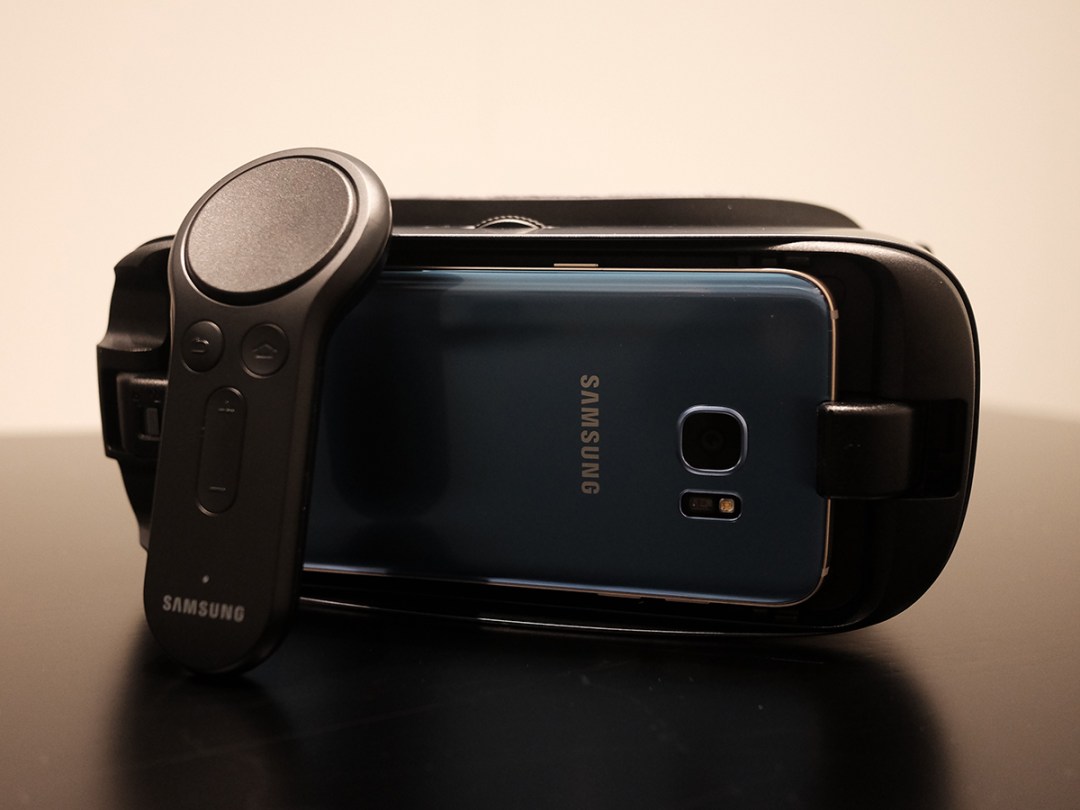
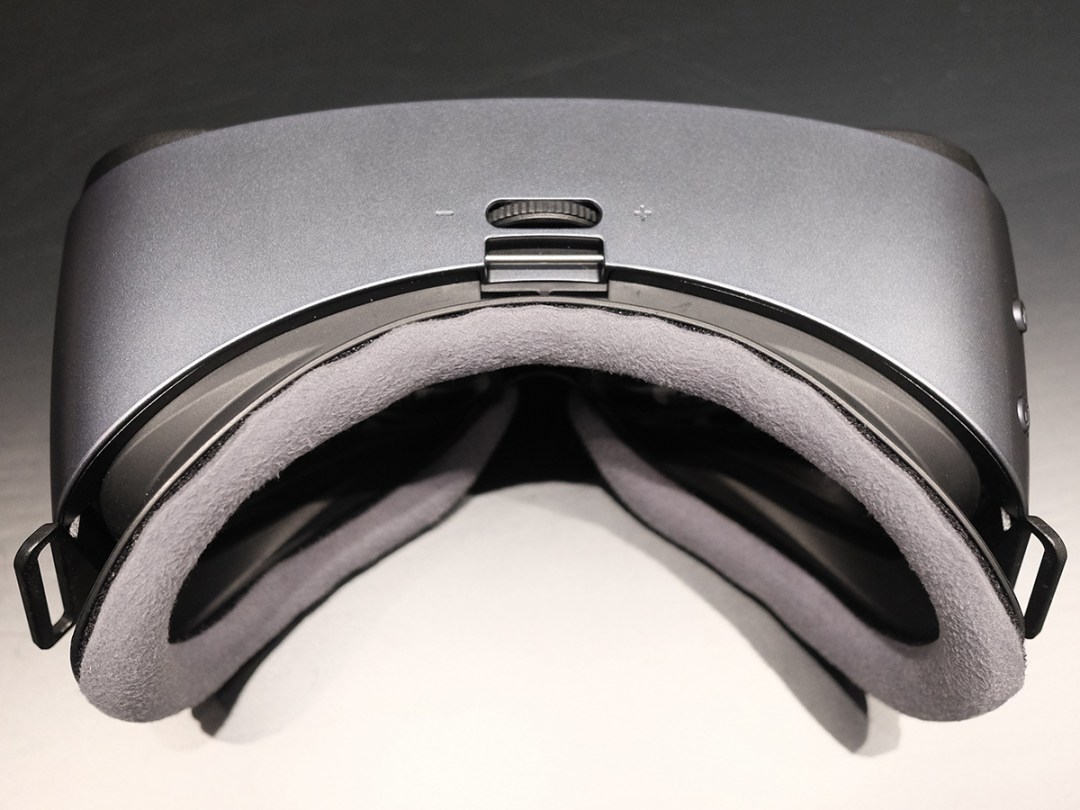
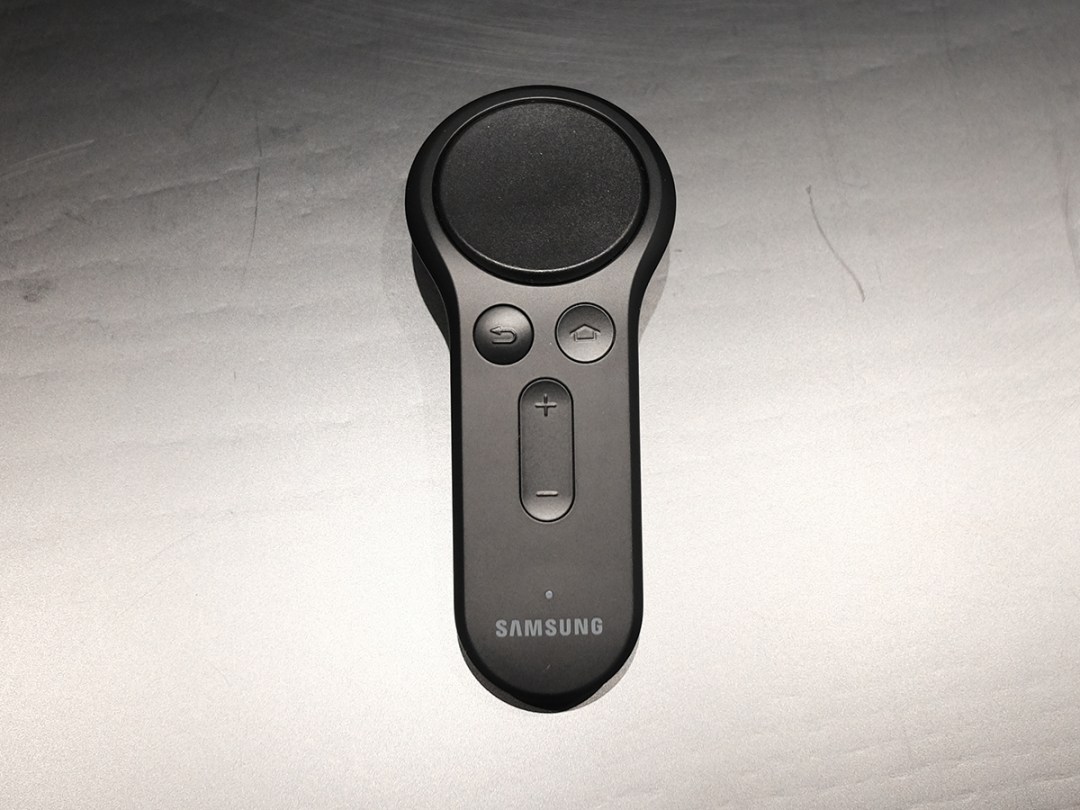
If you have a compatible Samsung phone, then the Gear VR is really a no-brainer for anyone with even the slightest interest in virtual reality.
For £99 over the price of the phone itself (of course), you can unlock some really immersive and entertaining experiences, and while not on the level of the HTC Vive or Oculus Rift, the total buy-in price is about half at most.
The new controller isn’t a game-changer by any means, but it’s a serious benefit: it’s a more comfortable, more versatile input device that allows for new kinds of interactions and broadens the horizons for Samsung’s platform. We’ll see more and more games take advantage of it in time, but even right now, the advantages are obvious. Google’s Daydream VR initiative didn’t exactly hit the ground running, either, with few other phone makers getting on board – it makes the Gear VR much more likely to earn a place in your home.
If you already have an older Gear VR headset, then you’re in luck: Samsung is selling the remote separately for US$40, and it’ll pair with your device. Get on that, if so. Everyone else with a Galaxy S8 or one of the other compatible phones: this is the best and most complete version to date, and packs in a lot of fun for relatively little cash.
Buy the Gear VR with Controller by Oculus here from Samsung
READ MORE › The 20 best Samsung Gear VR apps and experiences
Stuff Says…
One of the Galaxy S8’s best perks, and well worth the expense to get a deeper, more immersive VR experience
Good Stuff
Immersive VR experiences
Sturdy, comfortable design
Remote adds a lot to it
Bad Stuff
Only for flagship phones
Meatier content, please!
Some light bleeds in


